The Dangers of Nuclear Energy
Firstly, In the pursuit of advancing our energy systems, nuclear energy has emerged as a formidable source. Promising to meet the insatiable demand for power while reducing carbon emissions. However, beneath the surface of these benefits lies a complex and potentially hazardous reality. Still, the dangers of nuclear energy, encompassing everything from catastrophic accidents to the long-term handling of radioactive waste, present significant challenges and risks to our health, safety, and the environment. Thus this article aims to shed light on these concerns.
Introduction to the Dangers of Nuclear Energy
Nuclear energy, derived from the process of nuclear fission in nuclear reactors, has been a cornerstone of the global energy supply. While it offers a lower-carbon alternative to fossil fuels, the inherent dangers associated with nuclear power plants cannot be overlooked. From catastrophic events like the Chernobyl disaster and the Fukushima accident to the persistent issues of radioactive waste management. And the potential for nuclear proliferation, the risks are manifold.
Still, understanding these dangers requires a deep dive into the workings of nuclear reactors. Also the lifecycle of nuclear fuel, and the measures in place to safeguard public health and the environment. Therefore, it is a journey that reveals the complexities of balancing energy needs with the imperative to protect future generations from the adverse effects of nuclear energy.
The Lifecycle of Nuclear Energy and Its Hidden Dangers
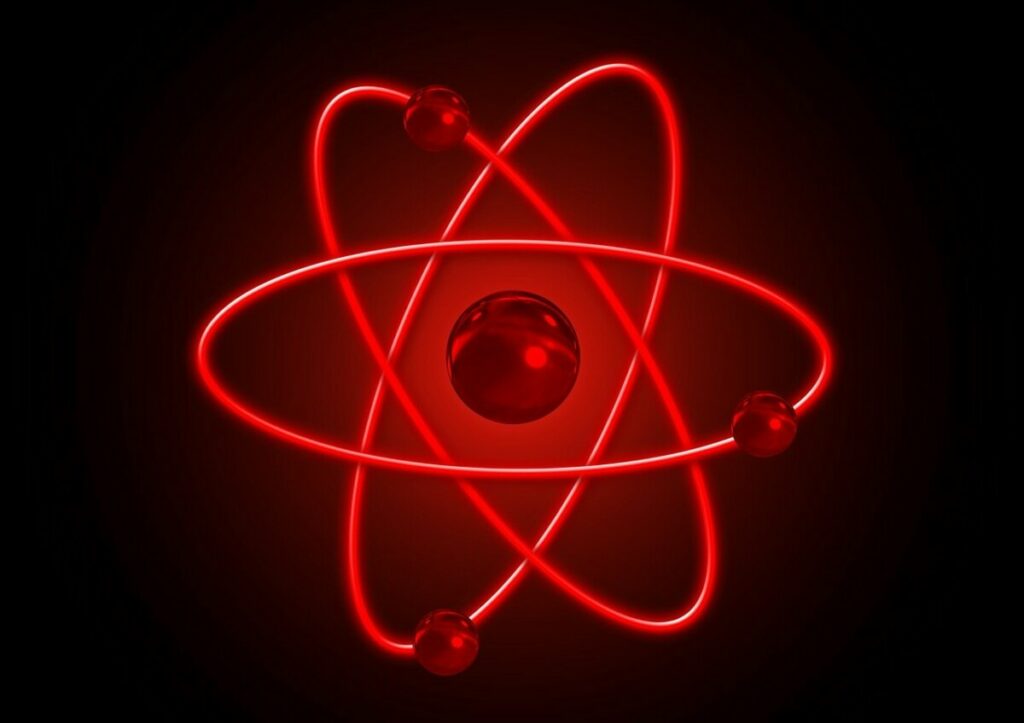
Nuclear Reactors: The Heart of the Matter
At the core of the dangers of nuclear energy is the nuclear reactor, where nuclear fission occurs. Thus, the process involves the splitting of uranium atoms to release a tremendous amount of heat, used to generate electricity. Despite the efficiency of this process, the potential for reactor core meltdowns poses a significant risk. Such events can lead to catastrophic radiation leaks, impacting human health and the surrounding environment for decades.
Radioactive Waste: A Persistent Challenge
Another critical issue is the management of radioactive waste produced by nuclear power stations. High-level waste, including spent fuel rods, remains dangerously radioactive for thousands of years. The proposed solution of deep geological repositories, such as Yucca Mountain in the United States, has been met with public and political resistance. Moreover, leaving the nuclear industry in a quandary over long-term storage solutions.
The Shadow of Nuclear Accidents
The Chernobyl disaster in 1986 and the Fukushima accident in 2011 serve as stark reminders. That of the catastrophic potential of nuclear energy. These events not only caused immediate harm through radiation exposure. But also had long-lasting effects on public health, environmental well-being, and the socio-economic fabric of the affected regions. They underscore the critical need for robust safety systems, emergency preparedness, and stringent regulatory oversight by bodies like the U.S. Nuclear Regulatory Commission and the International Atomic Energy Agency.
The Dangers of Nuclear Energy Frequently Asked Questions
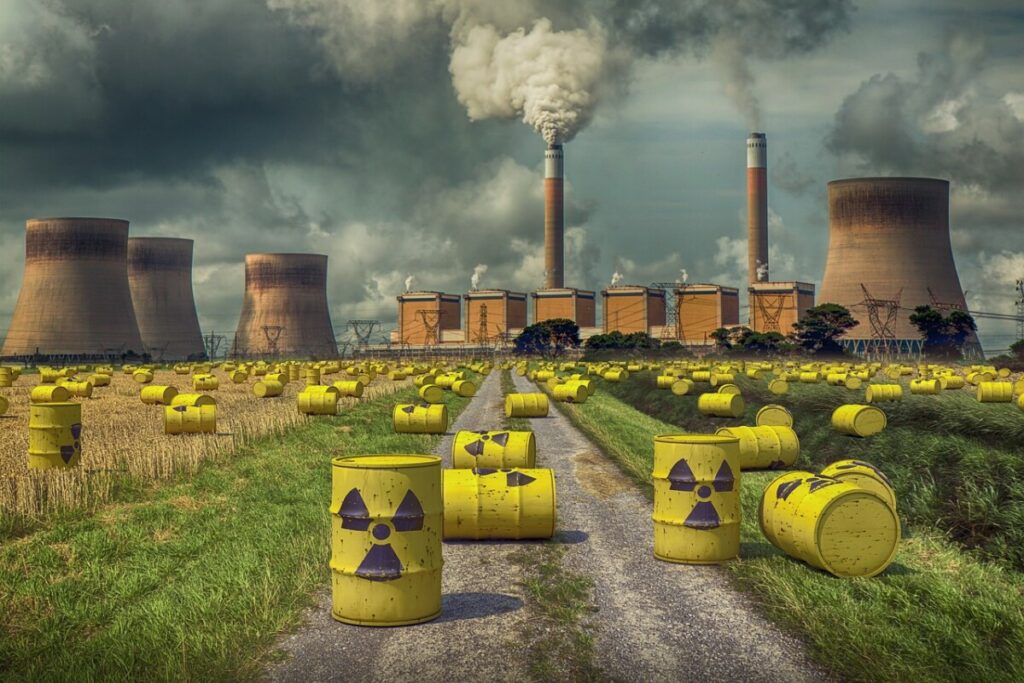
What is nuclear energy?
Nuclear energy is generated through the process of nuclear fission. Where the nucleus of an atom is split into two or more smaller nuclei, releasing a significant amount of energy.
Why is radioactive waste a concern?
Radioactive waste poses a long-term environmental and health risk due to its prolonged radioactivity. Requiring secure containment for thousands of years to prevent exposure.
How do nuclear accidents affect human health?
Nuclear accidents can lead to immediate and long-term health effects. Including acute radiation syndrome, increased cancer risk, and genetic damage in future generations.
The Dangers of Nuclear Energy
In this introduction and initial exploration of the dangers of nuclear energy sets the stage for a deeper examination of the issues at hand. We will continue to unravel the complexities of nuclear energy. Emphasizing the need for stringent safety measures, responsible waste management, and the exploration of alternative renewable energy sources. To safeguard our planet and future generations.
Continuing from where we left off, the next section of our article delves deeper into the multifaceted risks associated with nuclear energy. Emphasizing the dire consequences of nuclear accidents. And the perpetual challenge of managing nuclear waste.
The Catastrophic Legacy of Nuclear Accidents
Nuclear accidents, while rare, have had catastrophic effects on the environment, human health, and public confidence in nuclear power. The Chernobyl disaster in 1986 and the Fukushima accident in 2011 are stark reminders of the potential for disaster inherent in nuclear power generation. These events not only caused immediate harm but also left long-lasting scars on the affected regions.
Chernobyl Disaster: A Haunting Reminder
The Chernobyl accident, perhaps the most infamous nuclear disaster, exposed millions of people to dangerous levels of radiation and resulted in the immediate death of 30 individuals. With thousands more suffering from radiation exposure-related illnesses, such as cancer, over the following years. According to the World Health Organization, the disaster significantly increased the incidence of thyroid cancer among individuals exposed as children.
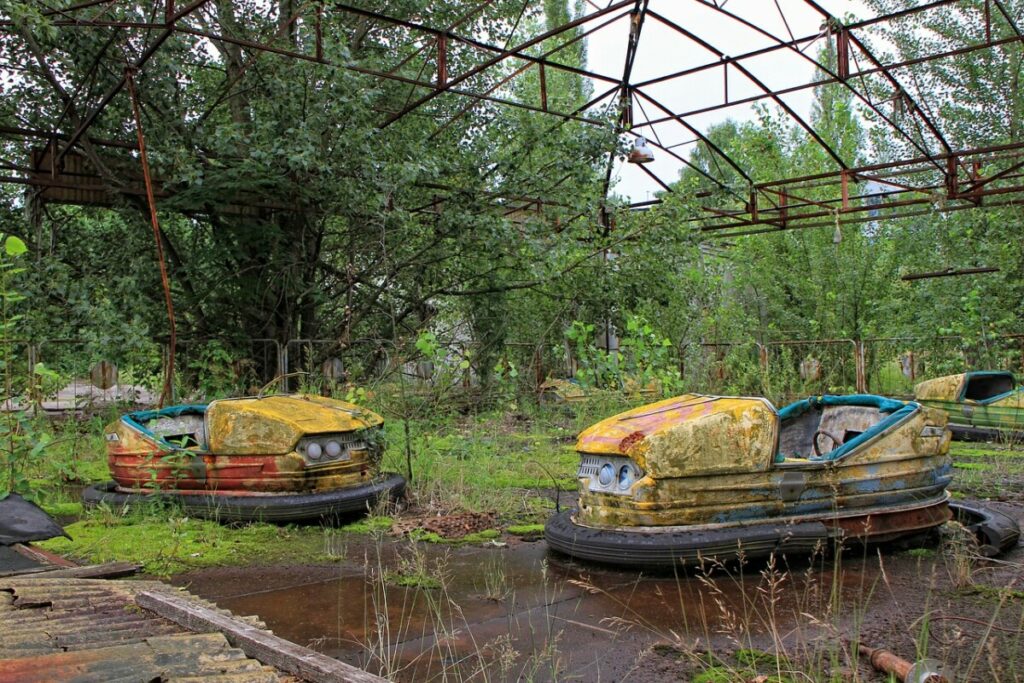
Fukushima Accident: A Wake-Up Call
Similarly, the Fukushima disaster highlighted the vulnerability of nuclear power plants to natural disasters. Triggered by a massive earthquake and tsunami, the Fukushima Daiichi nuclear power plant’s safety systems failed. Leading to reactor meltdowns and significant releases of radioactive material. Still this event forced the evacuation of thousands of residents and caused a reevaluation of nuclear safety standards worldwide.
The Dangers of Nuclear Energy
The Enduring Problem of Nuclear Waste
Another significant danger of nuclear energy is the handling and storage of nuclear waste. In fact, radioactive waste, a byproduct of nuclear fission, remains hazardous for thousands of years. Indeed, posing a major problem for current and future generations.
High-Level Waste: A Persistent Hazard
High-level waste, including spent nuclear fuel and other radioactive materials, requires secure containment. To prevent radiation exposure to the environment and human populations. Currently, most high-level waste is stored at the nuclear power plants where it was generated. In pools or dry casks, awaiting a long-term disposal solution that remains elusive.
Yucca Mountain: A Controversial Solution
The proposed Yucca Mountain nuclear waste repository in the United States was intended to be a deep geological repository for the permanent disposal of high-level radioactive waste. However, the project has faced significant political, technical, and social hurdles. Subsequently highlighting the challenges of finding acceptable solutions for nuclear waste management.
Health Risks: Cancer and Beyond
The dangers of nuclear energy extend to the increased risk of cancer and other health issues associated with radiation exposure. Workers in the nuclear industry, as well as communities living near nuclear facilities or those affected by nuclear accidents, face heightened risks of various cancers. Particularly thyroid cancer due to exposure to radioactive iodine.
Cancer Risk and Radiation Exposure
Radiation exposure from nuclear accidents or waste can lead to increased rates of cancer among exposed populations. However, the International Atomic Energy Agency acknowledges the need for stringent safety measures to minimize radiation exposure and protect human health.
Protecting the Public and Workers
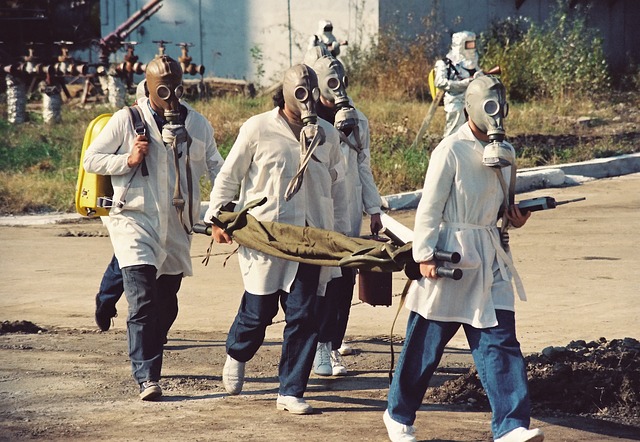
Ensuring the safety of the public and workers in the nuclear industry is paramount. Hence, this includes strict adherence to safety protocols. Continuous monitoring of radiation levels, and the provision of protective measures. Such as potassium iodide to mitigate the effects of radiation exposure.
In conclusion, while nuclear energy offers a low-carbon alternative to fossil fuels, its dangers—ranging from the catastrophic potential of nuclear accidents to the enduring challenge of managing nuclear waste. And the health risks associated with radiation exposure—cannot be overlooked. The nuclear industry must continuously strive for higher safety standards, and developing new technologies. Such as small modular reactors, may offer safer alternatives. However, the debate on the role of nuclear energy in combating climate change and meeting global energy needs continues. Weighing its benefits against its risks.
As we progress further into the complexities of nuclear energy, it’s crucial to examine the implications for national security. The evolving landscape of nuclear technology, and the broader environmental considerations that frame the debate on nuclear energy’s role in our future.
The Dangers of Nuclear Energy
National Security Concerns and Nuclear Proliferation
The intersection of nuclear energy and national security is a critical area of concern. Thus, nuclear reactors produce plutonium as a byproduct, which, in the wrong hands, can be used to manufacture nuclear weapons. Hence, this dual-use nature of nuclear technology necessitates rigorous safeguards and monitoring by international bodies. Such as the International Atomic Energy Agency (IAEA) to prevent nuclear proliferation.
Safeguarding Against Nuclear Proliferation
The global community faces the challenge of ensuring that nuclear technology is used exclusively for peaceful purposes. So this involves a complex web of treaties, agreements, and inspections designed to deter the spread of nuclear weapons technology. However, the potential for nuclear material to be diverted to weapons programs remains a significant concern. Furthermore underscoring the importance of robust security measures and international cooperation.
The Promise of Advanced Nuclear Technologies
Amid the risks associated with traditional nuclear reactors, the development of new nuclear technologies offers hope for safer, more sustainable nuclear energy. In fact, small modular reactors (SMRs) and advancements in nuclear fission technology are at the forefront of this innovation. Still promising to address many of the safety and waste concerns that have plagued the industry.
Small Modular Reactors: A Safer Alternative?
SMRs represent a significant shift from traditional large-scale reactors. Their compact size and modular design allow for enhanced safety features. Reduced risk of catastrophic failure, and greater flexibility in deployment. SMRs can also be manufactured in a factory setting and transported to a site, potentially reducing construction costs and timelines.
Breakthroughs in Nuclear Fission
Advancements in nuclear fission, including the development of reactors that can utilize existing nuclear waste as fuel, offer the potential to drastically reduce the amount of long-lived radioactive waste. These technologies not only promise to make nuclear energy safer but also more sustainable. By turning the problem of nuclear waste into a valuable energy resource.
The Dangers of Nuclear Energy
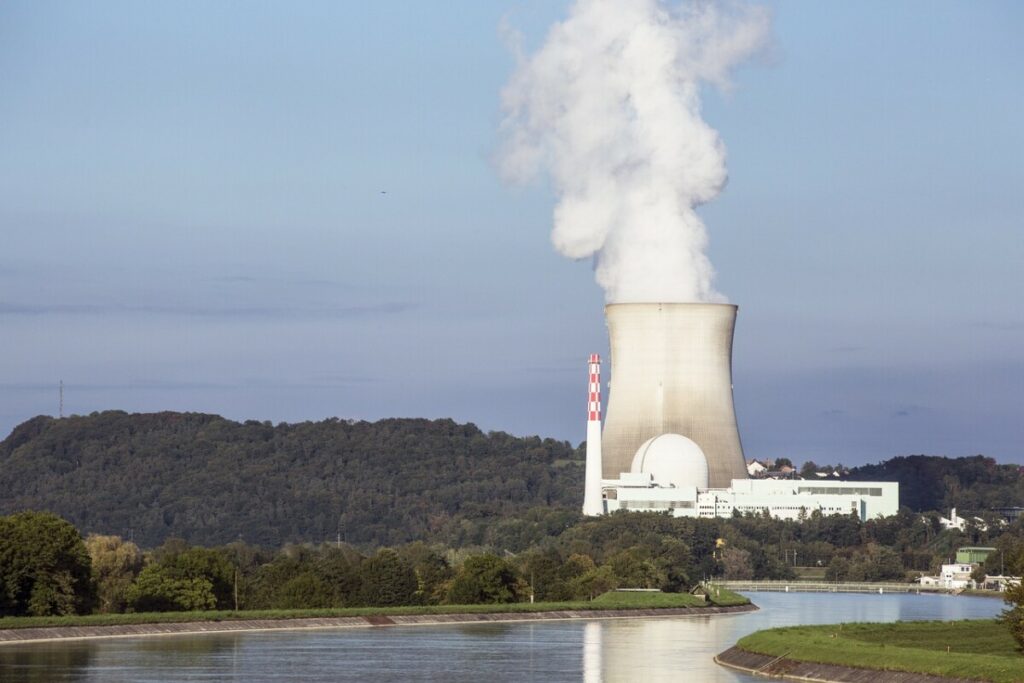
Environmental Considerations: Beyond Greenhouse Gas Emissions
While nuclear energy is lauded for its low greenhouse gas emissions compared to fossil fuels. The environmental impact of nuclear power extends beyond carbon dioxide output. The extraction and processing of uranium ore, the operation of nuclear facilities, and the disposal of radioactive waste all pose potential risks to the environment.
The Impact of Uranium Mining
Uranium mining, necessary for nuclear fuel, can have significant environmental and health impacts. Mines can contaminate local water sources with radioactive materials and heavy metals, affecting local ecosystems and communities. Efforts to mine uranium more responsibly and sustainably are ongoing, but the environmental footprint of uranium mining remains a concern.
Managing Radioactive Waste
The long-term management of radioactive waste is perhaps the most daunting environmental challenge associated with nuclear energy. While solutions such as deep geological repositories are being explored, the safe storage and disposal of nuclear waste require careful planning. And robust technology to ensure environmental protection for thousands of years.
In summary. The journey of nuclear energy from its inception to its current state and into the future is fraught with challenges, risks, and opportunities. As the world grapples with the urgent need to reduce carbon emissions and transition to clean energy. The role of nuclear power remains a topic of heated debate. The industry’s ability to innovate and address the concerns of safety, waste management, and environmental impact will be critical in determining nuclear energy’s place in our sustainable energy portfolio. The pursuit of advanced nuclear technologies, coupled with stringent safety and environmental protections, may offer a path forward where the benefits of nuclear energy can be harnessed while minimizing its dangers.
Continuing our in-depth exploration of the “Dangers of Nuclear Energy,” it’s essential to address the socio-economic implications. And the ethical considerations surrounding nuclear energy. The debate extends beyond the technical and environmental issues to encompass the impact on communities. The ethics of burdening future generations with nuclear waste, and the role of nuclear energy in addressing global energy inequality.
The Dangers of Nuclear Energy
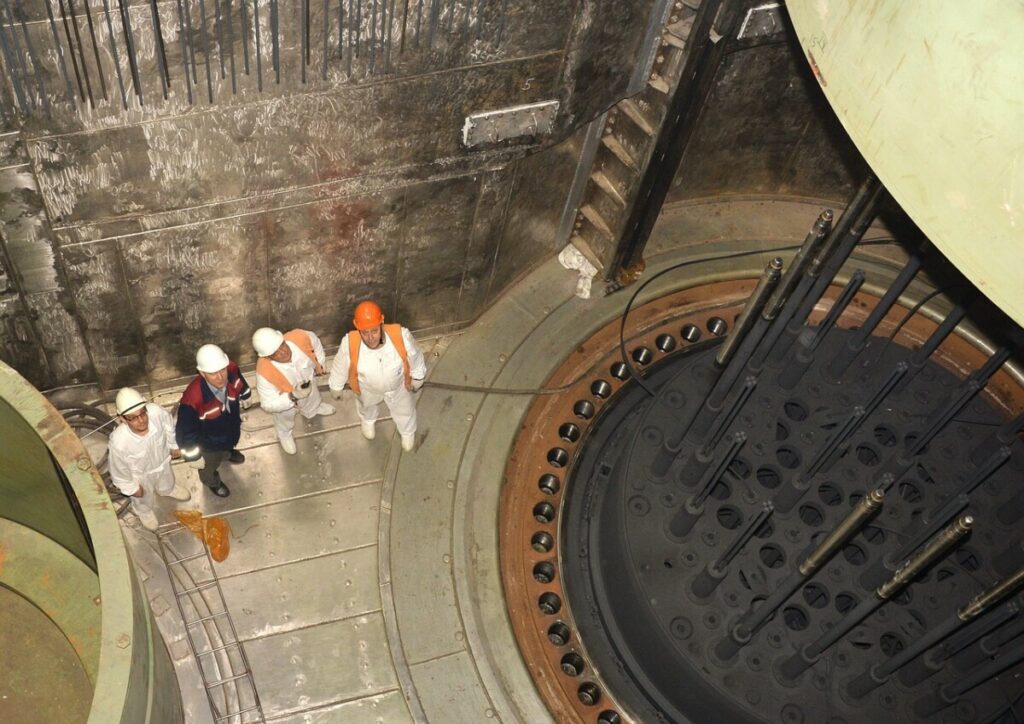
Socio-Economic Impacts of Nuclear Energy
Nuclear power plants are massive investments that can have profound effects on local economies. While they create jobs and contribute to local development, the financial risks associated with cost overruns, long construction times, and the potential for accidents can have significant economic repercussions.
Economic Viability and Cost Overruns
The construction of new nuclear plants often faces delays and cost overruns, making nuclear power a risky financial investment. For instance, the Vogtle nuclear plant expansion in Georgia, USA, has experienced significant delays and budget increases. Raising concerns about the economic feasibility of new nuclear projects. These financial uncertainties can deter investment in nuclear power. Favoring more cost-effective and less risky renewable energy sources like solar and wind.
Impact on Local Communities
Nuclear power plants can have a mixed impact on local communities. On the one hand, they provide high-paying, skilled jobs and contribute to local tax revenues. On the other hand, the potential for accidents and the stigma associated with nuclear facilities can affect property values and community well-being. The need for emergency preparedness and the fear of radiation exposure can also weigh heavily on those living near nuclear plants.
The Dangers of Nuclear Energy
Ethical Considerations: Future Generations and Energy Equity
The ethical dimensions of nuclear energy revolve around the responsibility we have towards future generations. And the equitable distribution of energy resources. Nuclear waste, with its long-lived radioactivity, presents a moral dilemma about the legacy we leave for those who will come after us.
The Burden on Future Generations
Managing nuclear waste requires a commitment extending thousands of years into the future. Far beyond the lifespans of current nuclear facilities. This raises ethical questions about our right to generate energy today which results in a hazardous legacy for future generations. The search for permanent waste disposal solutions, such as deep geological repositories, is an ongoing challenge that underscores the importance of responsible nuclear waste management.
Addressing Global Energy Inequality
While nuclear energy can contribute to reducing carbon emissions, the benefits and risks are not evenly distributed globally. Developed nations with advanced nuclear capabilities enjoy the energy security and low-carbon advantages of nuclear power. While many developing countries face barriers to accessing this technology. Moreover, the environmental and health impacts of uranium mining predominantly affect less affluent regions. Highlighting issues of energy equity and environmental justice.
Transitioning Towards a Sustainable Energy Future
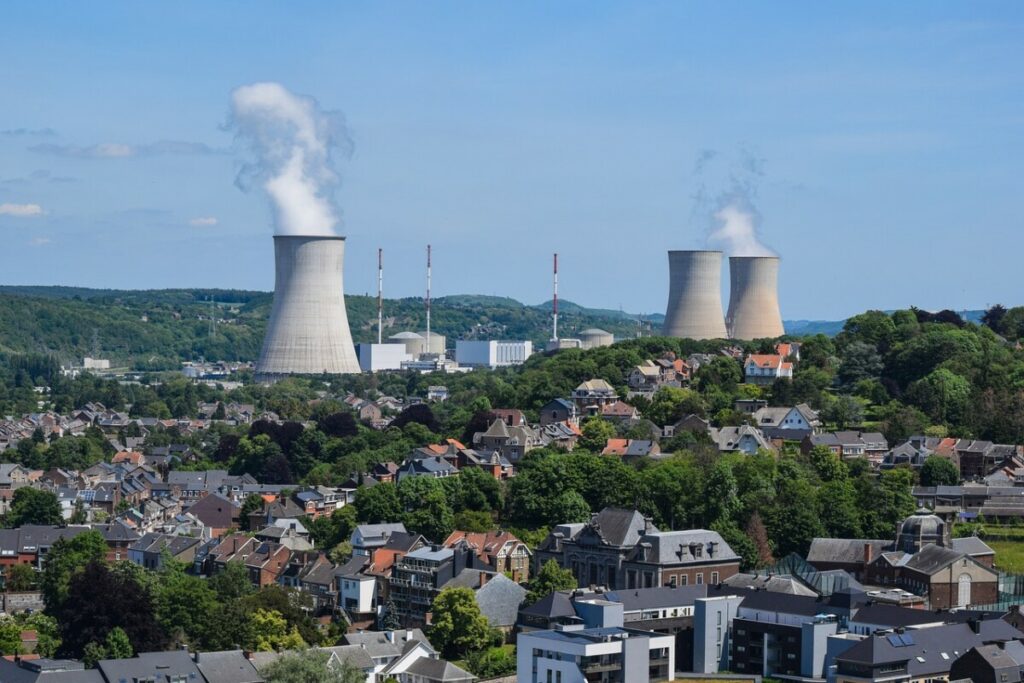
As we confront the realities of climate change and the urgent need for a sustainable energy transition, the role of nuclear energy remains contentious. Balancing the dangers of nuclear energy with its potential to contribute to a low-carbon energy mix requires careful consideration of technological, environmental, socio-economic, and ethical factors.
Embracing a Diverse Energy Portfolio
The path to a sustainable energy future is likely to involve a diverse portfolio of energy sources. Renewable energy technologies, such as wind, solar, and hydro, are rapidly advancing and offer clean, safe, and economically viable alternatives to nuclear power. However, the intermittent nature of some renewables and the current limitations of energy storage technologies suggest that nuclear energy, particularly advanced and safer nuclear technologies, may play a complementary role in ensuring a stable and reliable energy supply.
The Importance of Public Engagement and Policy Support
Achieving a balanced and sustainable energy mix requires not only technological innovation but also strong public engagement and policy support. Transparent dialogue about the risks and benefits of nuclear energy, coupled with investments in renewable energy and energy efficiency, can help build a consensus on the way forward. Policy frameworks that prioritize safety, environmental protection, and energy equity will be crucial in guiding the transition to a more sustainable and just energy system.
In conclusion, the debate on the dangers of nuclear energy is a complex and multifaceted issue that encompasses technical, environmental, economic, and ethical dimensions. As we strive to mitigate climate change and build a sustainable energy future, the decisions we make today about nuclear energy will have profound implications for generations to come. These decisions must be informed by a comprehensive understanding of the risks, benefits, and alternatives to nuclear power, ensuring a safe, equitable, and sustainable energy landscape for all.
As the discourse on nuclear energy’s role in the future energy landscape continues, it becomes imperative to consider regulatory and safety innovations, the impact of global policy shifts, and the potential for nuclear energy to complement renewable resources in achieving carbon neutrality. This segment explores these facets, emphasizing the critical need for rigorous oversight, the integration of nuclear energy within global energy policies, and the synergies between nuclear and renewable energy sources.
Strengthening Nuclear Regulatory Frameworks
The safety of nuclear power plants hinges on stringent regulatory frameworks that enforce the highest standards of nuclear safety and security. National regulatory bodies, such as the U.S. Nuclear Regulatory Commission (NRC), alongside international organizations like the International Atomic Energy Agency (IAEA), play pivotal roles in overseeing nuclear safety.
Enhancements in Safety Measures
In response to past nuclear accidents, the nuclear industry has made significant advancements in safety protocols, including the development of Generation III+ reactors with passive safety systems that can automatically shut down reactors in the event of a malfunction, reducing the risk of a catastrophic event. Indeed, these improvements reflect a commitment to learning from past mistakes and enhancing the safety and resilience of nuclear facilities.
International Collaboration for Nuclear Safety
Global nuclear safety is bolstered by international treaties and collaborative efforts, such as the Convention on Nuclear Safety, which promotes the sharing of best practices and peer reviews of nuclear safety measures among participating countries. As a result this international cooperation is crucial for maintaining and improving safety standards worldwide, ensuring that nuclear energy, where used, is produced as safely as possible.
The Dangers of Nuclear Energy

Nuclear Energy in Global Climate Policy
The role of nuclear energy in addressing climate change is increasingly recognized in international discussions. Hence, The Paris Agreement, a landmark global accord aimed at reducing carbon emissions, underscores the importance of all low-carbon technologies, including nuclear, in achieving global climate targets.
Balancing Nuclear Risks with Climate Goals
Countries are faced with the challenge of balancing the risks associated with nuclear energy against the urgent need to reduce greenhouse gas emissions. For nations committed to decreasing their carbon footprint, nuclear energy offers a potent, albeit controversial, tool in their energy strategy, necessitating a nuanced approach to its deployment alongside renewables.
Synergy Between Nuclear and Renewable Energy
The integration of nuclear energy with renewable sources presents an opportunity to create a more resilient and low-carbon energy system. Nuclear power can provide stable, baseload electricity, complementing the variability of renewable sources such as wind and solar.
Enhancing Grid Stability and Energy Security
The combination of nuclear and renewable energy sources can enhance grid stability and energy security, offering a diversified energy mix that mitigates the intermittency challenges of renewables. By leveraging the strengths of both nuclear and renewables, countries can make significant strides toward achieving energy independence and sustainability.
The Path to Carbon Neutrality
Achieving carbon neutrality—a state where carbon emissions are balanced with carbon removal or offsetting measures—requires an all-hands-on-deck approach to energy production. Nuclear energy, with its capacity for high-output, low-carbon electricity generation, could play a critical role in the energy transition, especially when integrated with renewable energy expansion and energy efficiency improvements.
In wrapping up, the journey toward a sustainable and secure energy future is complex and multifaceted. While nuclear energy poses undeniable risks and challenges, its potential contributions to carbon reduction and energy security cannot be dismissed outright. The future will likely see an energy landscape where nuclear energy, subject to stringent safety standards and regulatory oversight, operates in concert with a broad array of renewable energy technologies. This balanced approach, underpinned by technological innovation, rigorous safety standards, and robust policy frameworks, can pave the way for a sustainable, low-carbon energy future that safeguards both the environment and human health.
So, as we approach the conclusion of our comprehensive discussion on the “Dangers of Nuclear Energy,” it’s critical to consolidate our understanding and look forward to the pathways that can reconcile the need for clean energy with the imperative of safety and sustainability. What’s more, this final segment reflects on the lessons learned, the importance of innovation in the nuclear sector, and the ethical responsibility to pursue energy solutions that do not compromise the well-being of future generations.
Embracing Innovation for Safer Nuclear Energy

Innovation within the nuclear industry holds the key to addressing many of the dangers associated with nuclear energy. Research and development into safer reactor designs, more efficient fuel cycles, and advanced waste management techniques are essential for mitigating the risks of accidents, minimizing radioactive waste, and reducing the potential for proliferation.
Advancements in Reactor Technology
The evolution from traditional nuclear reactors to advanced designs promises enhanced safety features, greater fuel efficiency, and reduced waste production. Fourth-generation reactors and thorium-based fuel cycles are examples of innovations that could revolutionize the nuclear industry by offering inherently safer operations and alleviating concerns over long-lived radioactive waste.
Breakthroughs in Waste Management
Solving the nuclear waste dilemma is paramount for the long-term viability of nuclear energy. Innovations in waste reprocessing and recycling can significantly decrease the volume and toxicity of nuclear waste, transforming it from a burden into a resource. Research into novel waste disposal methods, including deep borehole disposal and transmutation technology, offers hope for a future where nuclear waste poses minimal risk to the environment and public health.
The Role of Policy and Public Engagement
The future of nuclear energy is not solely in the hands of scientists and engineers; it requires active engagement from policymakers, regulators, and the public. Transparent dialogue, informed by science and grounded in ethical considerations, is crucial for navigating the complexities of nuclear energy and its role in our energy future.
Crafting Informed Energy Policies
Effective energy policies must balance the benefits and risks of nuclear energy. Taking into account environmental impacts, economic feasibility, and social equity. Governments have a responsibility to implement regulatory frameworks that ensure the highest standards of nuclear safety, promote research and development in clean energy technologies, and facilitate public participation in energy decision-making processes.
Building Public Trust Through Transparency
Public skepticism and opposition to nuclear energy often stem from concerns over safety, environmental impacts, and the legacy of past accidents. Building public trust requires a commitment to transparency, rigorous safety standards, and meaningful community engagement. Educating the public about the realities of nuclear energy, including its potential benefits and risks, is essential for informed societal discourse and decision-making.
The Dangers of Nuclear Energy
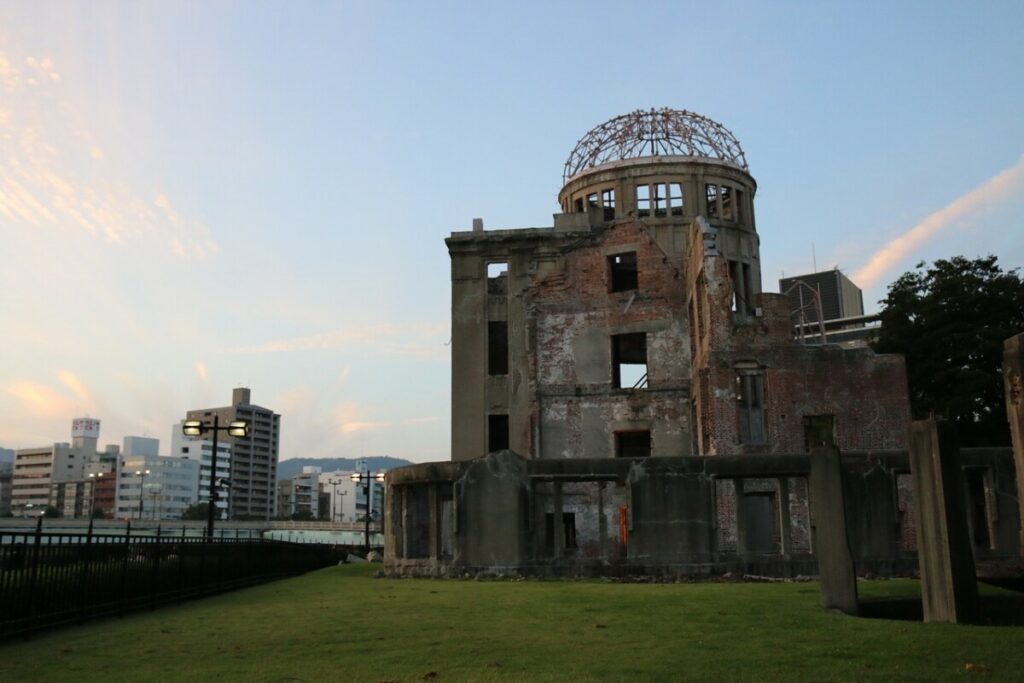
Towards a Sustainable and Equitable Energy Future
In conclusion, the “Dangers of Nuclear Energy” compel us to tread carefully as we seek solutions to the global energy crisis and climate change. The path forward must be paved with rigorous safety protocols, innovative technologies, and a commitment to environmental stewardship and social responsibility. As we contemplate the role of nuclear energy in achieving a sustainable and equitable energy future, it is clear that a holistic approach, incorporating renewable energy sources, energy efficiency, and potentially safer forms of nuclear energy, is necessary.
Finally, the decisions we make today will resonate for generations to come. Emphasizing the need for a thoughtful and balanced approach to energy production. Yes by prioritizing safety, sustainability, and equity, we can harness the benefits of nuclear energy. While minimizing its dangers, contributing to a cleaner, more resilient, and just global energy system.
Recent Posts
Understanding Energy and Electricity: The Power For Progress
Energy and Electricity Energy and electricity are integral components of modern life, powering everything from homes and businesses to transportation and communication. Without them, the...
The Future of Wind Energy The future of wind energy is set to play a critical role in addressing global energy needs while combating climate change. As renewable energy sources like wind and...


